Santa Maria al Bagno
Updated at: 01-12-2024
How this content can help you:
- The location of Santa Maria al Bagno in Salento, Puglia, and how to reach it.
- The characteristics of the beach, with fine sand and clear waters ideal for families.
- The available parking options, both paid and free.
- The places of interest such as the Museum of Memory and Hospitality and the Four Columns.
- The activities to do, such as excursions, water sports, and tasting the local cuisine.
- The rich history of the town, including the welcoming of Jewish refugees after World War II.
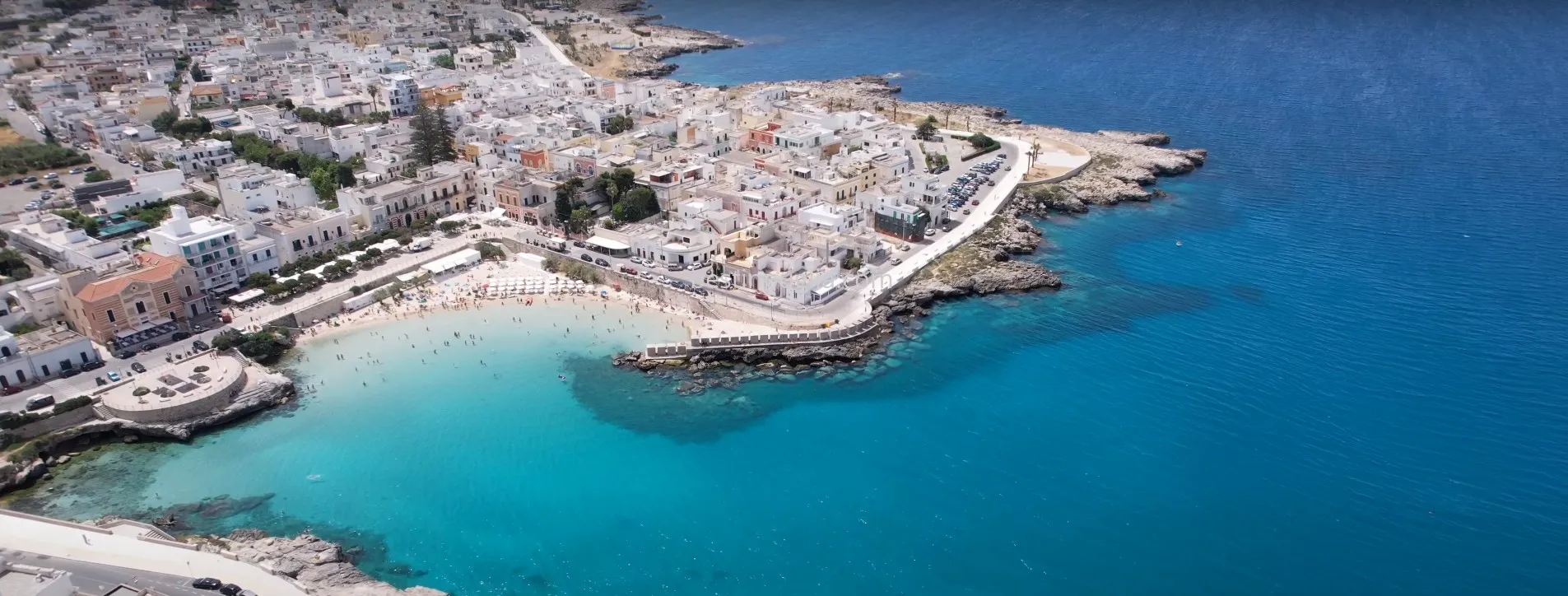
Santa Maria al Bagno, a charming locality situated in the heart of Salento, Puglia, is renowned for its natural beauty and the quality of its waters.
This locality has been awarded the prestigious Blue Flag, an international recognition given to beaches that meet strict environmental, cleanliness, and safety criteria.
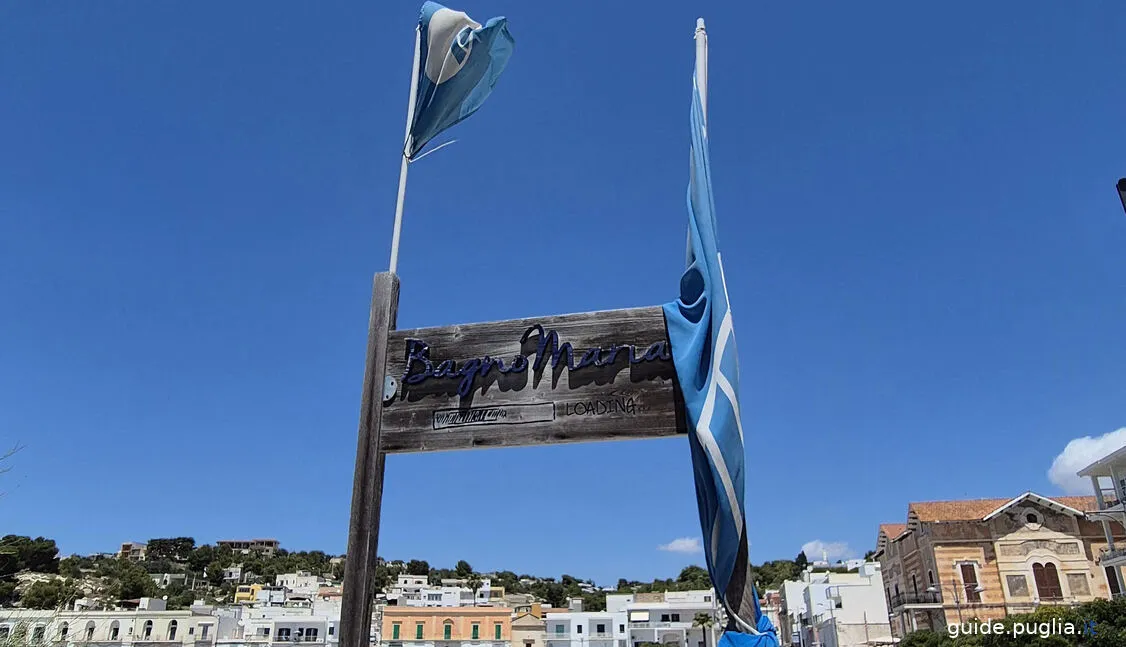
Where is Santa Maria al Bagno Located
Santa Maria al Bagno is a picturesque locality in Puglia, specifically in the municipality of Nardò, Lecce province.
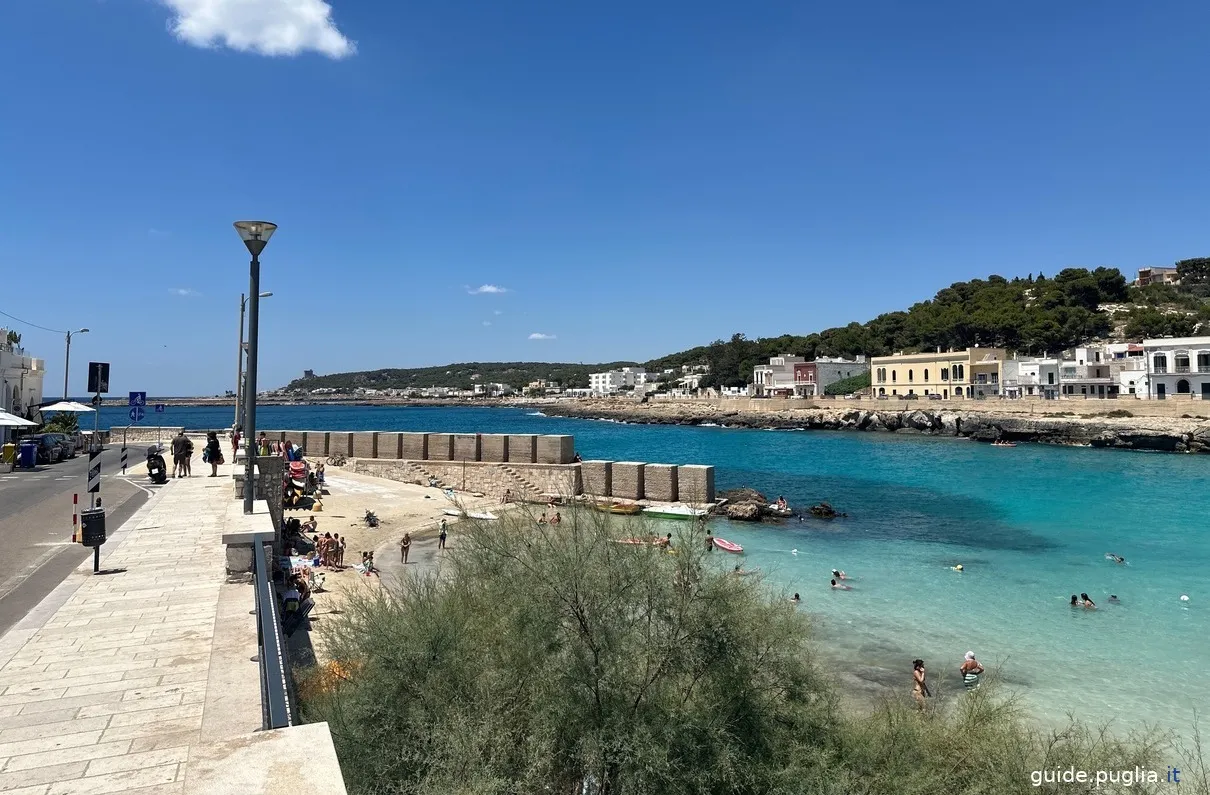
This charming village overlooks the Ionian Sea and is located between Gallipoli and Santa Caterina, close to the Porto Selvaggio Regional Natural Park. Its strategic position makes it easily accessible from various cities in Puglia, including Lecce and Brindisi.
Where to Park in Santa Maria al Bagno
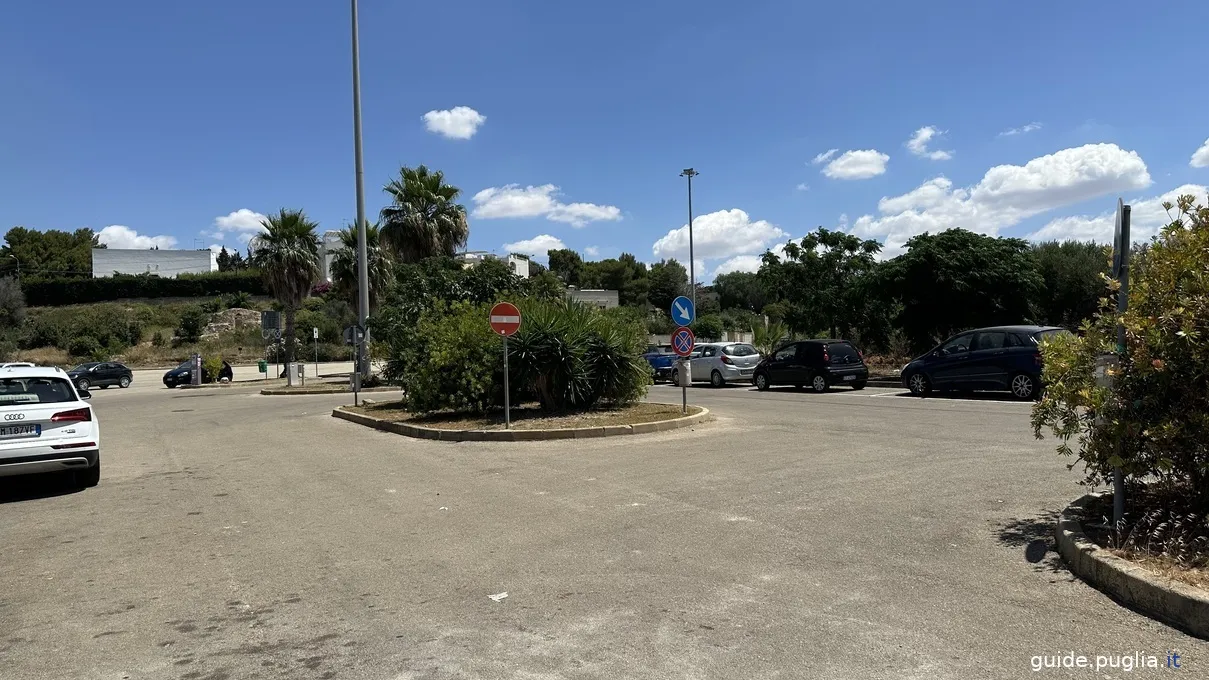
Santa Maria al Bagno offers various parking options for visitors to this fascinating coastal locality.
Paid Parking
In the village center, near the main square, there are numerous paid parking spots. These are particularly convenient for those who want to be close to the beach and the main attractions of the village.
Paid parking is a good option if you prefer the convenience of parking in the immediate vicinity of the center.
Free Parking
For those who prefer to save money, it is possible to park for free along the surrounding streets. A recommended area is Via Emanuele Filiberto, which offers a large free parking area.
This street is particularly useful for those who want to access the area of Quattro Colonne, Piazza Shalom, the Museum of Memory and Welcome, or the Salento Aquarium.
Parking Tips
- Lungomare: Parking along the Lungomare or in the surrounding streets can be a good option, especially during periods of lower tourist traffic.
- Stairs and Fountains: If you park near the center, you can easily reach the beach via the stairs that lead directly to the sea. Additionally, there are fountains with fresh water to refresh yourself after a day in the sun.
The Beach of Santa Maria al Bagno
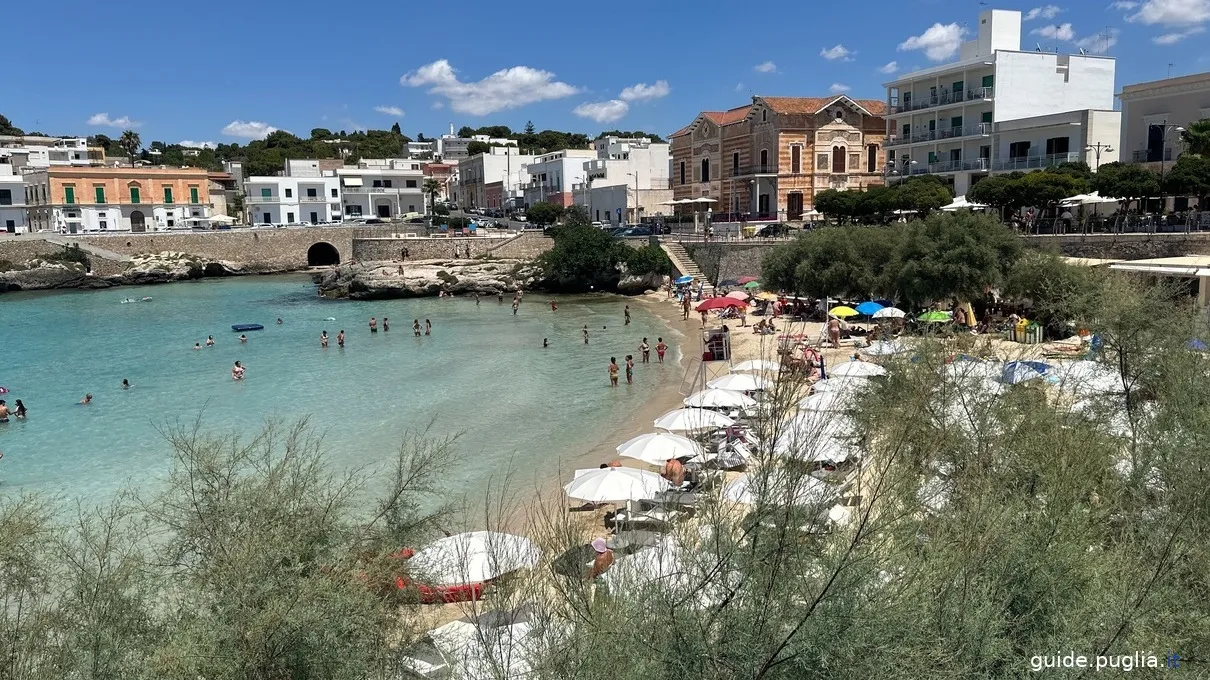
Beach Features
The main beach of Santa Maria al Bagno is characterized by clear, fine sand, alternating with rocky sections that offer picturesque scenery and are perfect for snorkeling. The seabed is shallow and gradual, making this beach particularly suitable for families with children.
The beach is well-equipped with various lidos offering services such as umbrella and sunbed rentals, bars, and restaurants.
For those who prefer free beaches, there are large areas where you can spread out your towel and enjoy the sun.
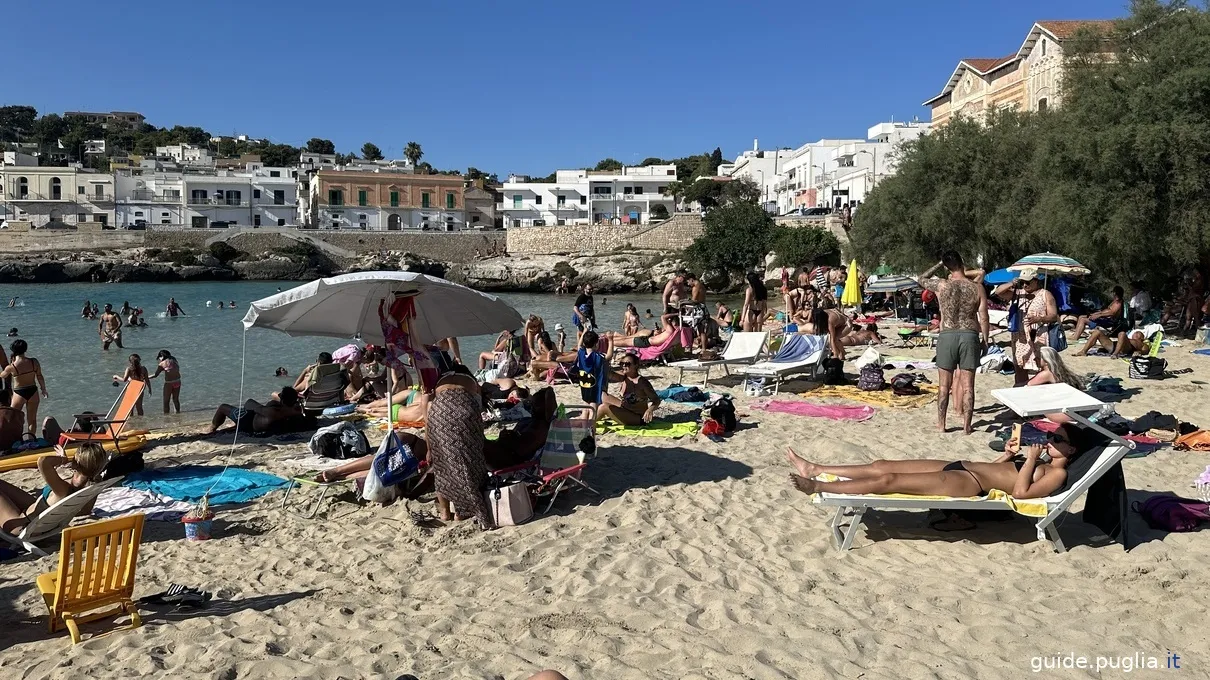
The landscape around the beach of Santa Maria al Bagno is equally fascinating. The village itself is framed by a series of hills and promontories that offer panoramic views of the sea.
The Water
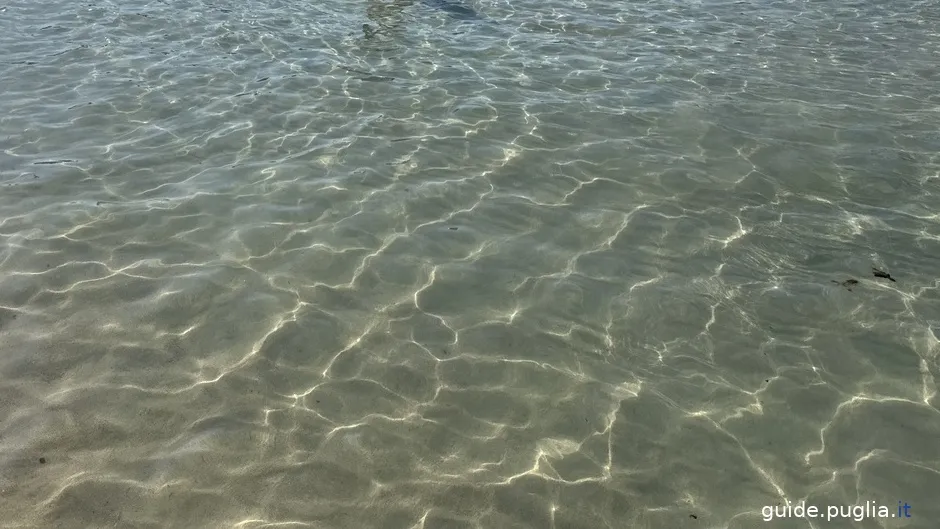
The water of Santa Maria al Bagno is famous for its transparency and purity. During the summer months, the water temperature is pleasantly warm, ideal for long swims.
The underwater visibility is excellent, making this place perfect for activities such as snorkeling and scuba diving. Swimmers can observe a variety of marine life near the rocky sections, adding an element of adventure to a day at the beach.
What to See in Santa Maria al Bagno
Santa Maria al Bagno offers a variety of attractions for its visitors. Among the most notable points of interest are the Museum of Memory and Welcome and Torre Santa Maria, also known as "Le Quattro Colonne".
Museum of Memory and Welcome
The Museum of Memory and Welcome in Santa Maria al Bagno is a place of great historical and cultural significance, dedicated to a significant period of the 20th century.
This museum documents the reception given to Holocaust survivors between 1943 and 1947, who found refuge in this Apulian locality.
What to See Inside
The museum is organized into several exhibition rooms that tell the story of the Jewish refugees who passed through Santa Maria al Bagno on their way to a new life.
Among the exhibited items are photographs, documents, videos, and testimonies illustrating life in the reception camps and the support offered by the local community. A particularly interesting feature is the presence of original murals painted by the refugees themselves, depicting scenes from their lives and their hopes for the future.
Hours and Costs
The museum is generally open to the public on weekends, but it is advisable to check the updated hours directly with the facility or on their website.
Typical hours include Saturday afternoons from 4:00 PM to 6:30 PM and Sunday mornings and afternoons from 10:30 AM to 1:00 PM and from 4:00 PM to 6:30 PM.
Admission is often free or requires a small contribution for the maintenance of the exhibitions and facilities.
Accessibility
The Museum of Memory and Welcome is accessible to people with disabilities.
It is located on Lungomare Alfonso Lamarmora and has ramps and accessible paths that facilitate entry and visits for all visitors.
Torre del Fiume di Galatena (Torre Le Quattro Colonne)
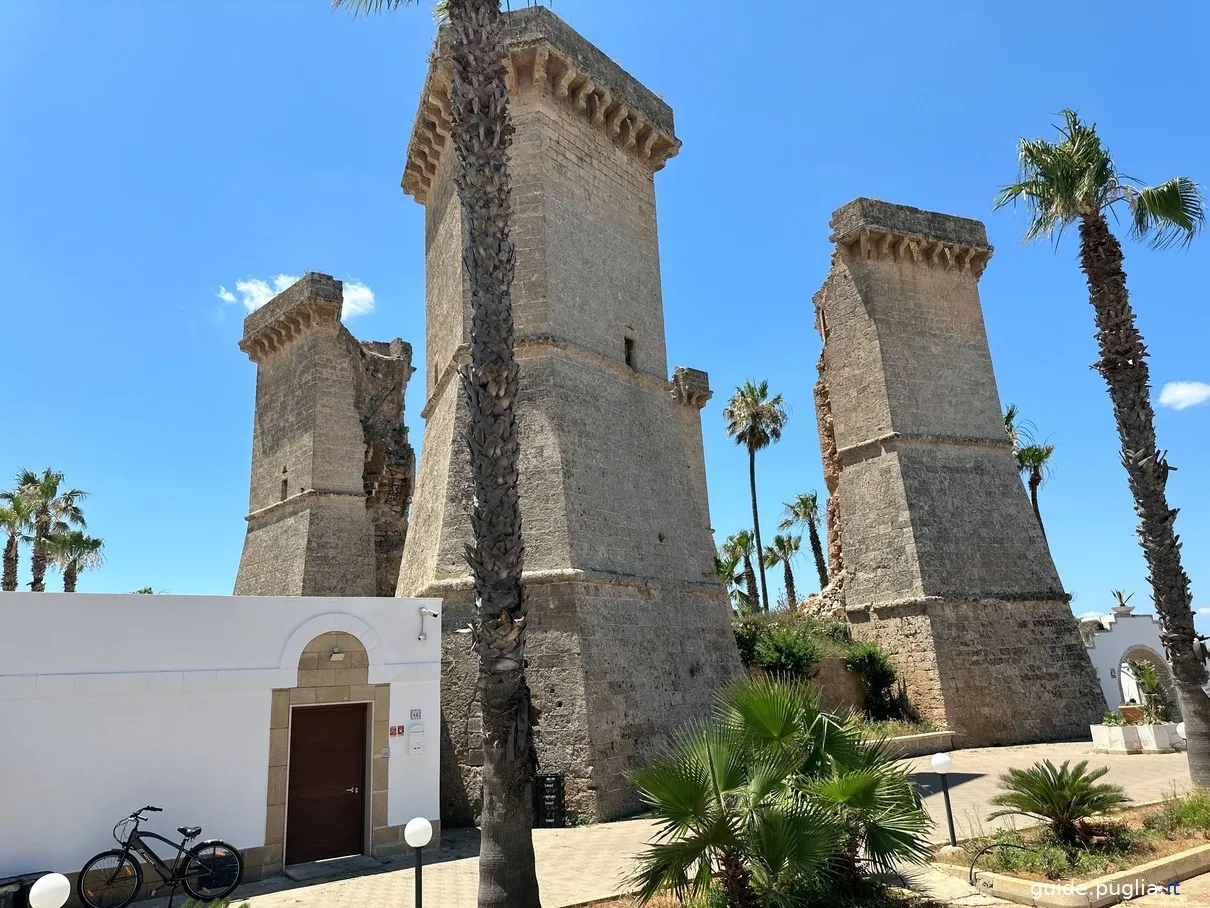
The Torre del Fiume di Galatena, also known as "Le Quattro Colonne", is one of the most iconic structures of Santa Maria al Bagno.
This medieval coastal tower was built in the 16th century as part of a defensive system designed to protect the Apulian coast from pirate and Saracen incursions. The original structure comprised a main tower surrounded by four robust columns, which are all that remain visible today, hence the current name.
Tower Features
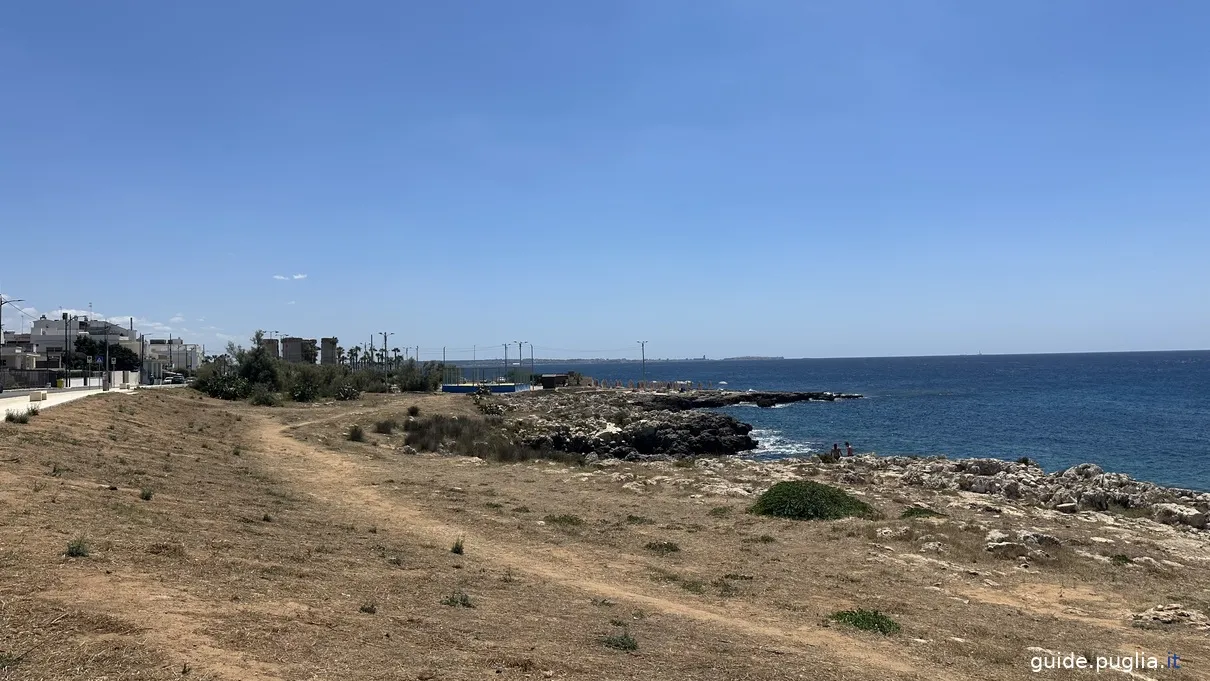
The Quattro Colonne are positioned on a promontory overlooking the sea, offering a spectacular panoramic view of the surrounding coast.
The columns are tall and massive, and despite the passage of centuries, they maintain a majesty that testifies to the strategic importance they once had. The structure is a significant example of Renaissance military architecture in Puglia.
The Beach with a Spring
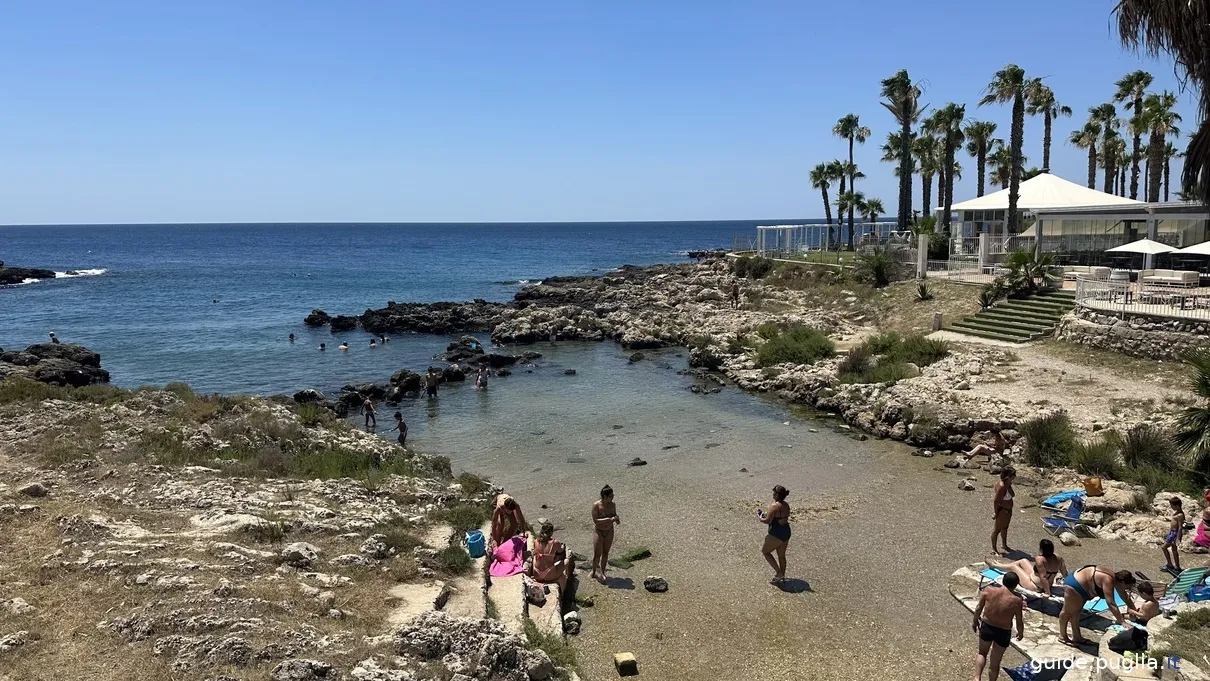
Near the Quattro Colonne, there is a beach characterized by the presence of a freshwater spring, which makes this stretch of coast unique and particularly interesting from a naturalistic point of view.
This spring, called Fonte del Fiume Galatena, was essential for the inhabitants and the garrisons guarding the tower, providing a constant supply of fresh water.
Access to the Tower and the Beach
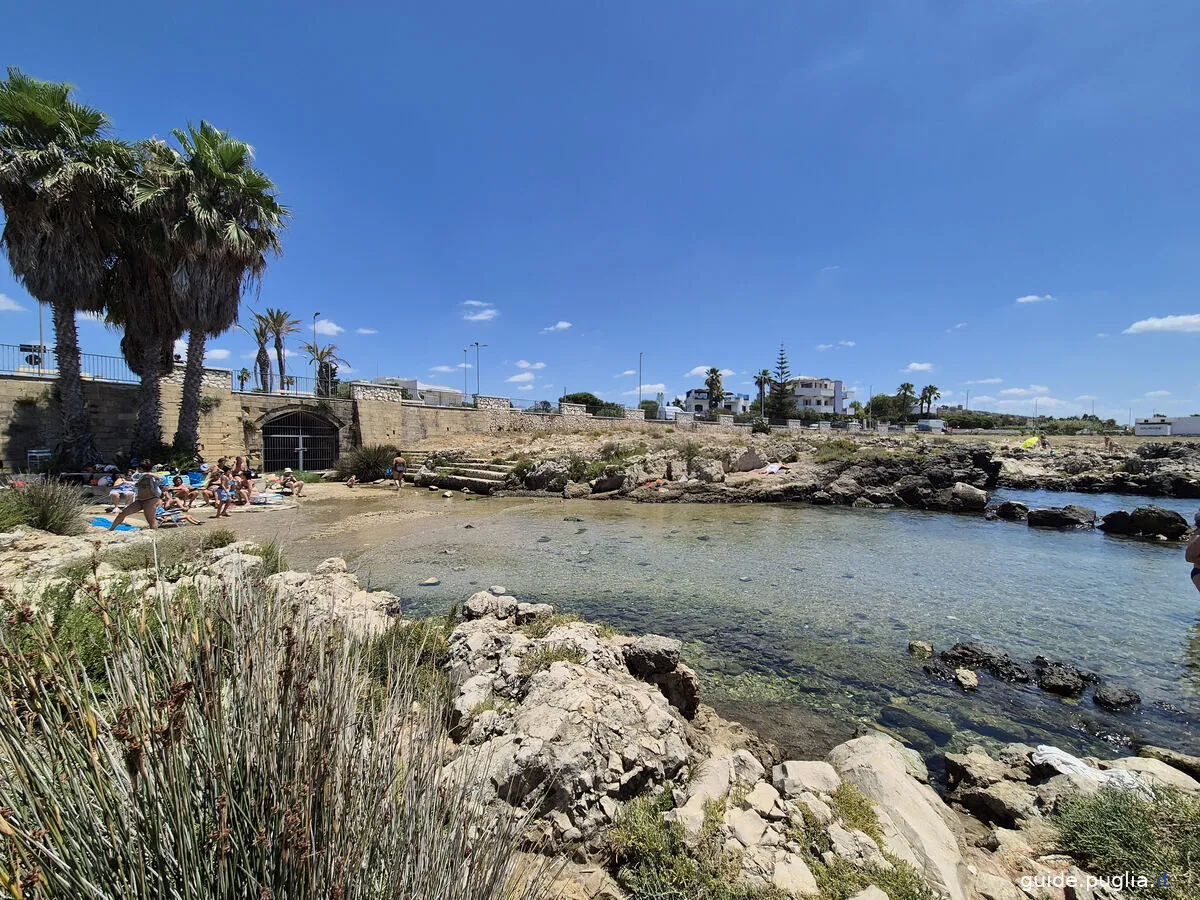
Access to Torre Santa Maria and the beach with the spring is free and open to the public. The area is easily reachable on foot from the center of the village of Santa Maria al Bagno, and the beach is frequented by both locals and tourists, especially in the summer months.
There are no specific opening hours, but it is advisable to visit the area during the daytime to fully enjoy the beauty of the place and the panoramic views.
Things to Do in Santa Maria Al Bagno
Santa Maria al Bagno is a charming locality offering various activities for visitors, making it an ideal destination for a relaxing and exploratory vacation. Here are some of the main activities to do in the village:
1.Enjoy the Beaches
The main attraction of Santa Maria al Bagno is its beaches with crystal-clear waters and white sand. The main beach of the village is perfect for swimming, sunbathing, and snorkeling.
The presence of equipped lidos ensures that visitors can spend entire days in comfort.
2.Stroll through the Historic Center
The center of Santa Maria al Bagno is fascinating with its narrow streets, shops, and small squares.
Strolling through the center offers the opportunity to discover the local culture, shop in artisanal stores, and relax in cafes and bars.
3.Explore the Torre del Fiume di Galatena (Le Quattro Colonne)
This historic coastal tower is an iconic landmark. Besides being an important historical site, it offers spectacular views of the sea and the surrounding coast.
It is an ideal place for panoramic walks and memorable photographs.
4.Hike in the Porto Selvaggio Regional Natural Park
A short distance from Santa Maria al Bagno is the Porto Selvaggio Regional Natural Park, a protected area offering hiking trails immersed in nature, with pine forests and rocky coasts leading to hidden coves and turquoise waters.
It is an ideal place for nature lovers and outdoor activities.
5.Water Activities
The clear waters of Santa Maria al Bagno are perfect for various water activities, including snorkeling, diving, and kayaking.
6.Boat Excursions
Several local agencies organize boat excursions that allow you to explore sea caves and hidden bays along the coast.
These excursions are a great opportunity to see the landscape from a different perspective and discover hidden corners of natural beauty.
7.Taste the Local Cuisine
The restaurants of Santa Maria al Bagno offer delicious local cuisine, with dishes based on fresh fish and Apulian specialties.
Trying the typical dishes of the region, accompanied by local wines, is a culinary experience not to be missed.
8.Visit the Surroundings
Santa Maria al Bagno is an excellent starting point to explore other fascinating localities of Salento, such as Gallipoli and Santa Caterina, which offer additional historical, natural, and culinary attractions.
The History of Santa Maria Al Bagno
The roots of Santa Maria al Bagno date back to the times of the Messapians, an ancient Italic tribe that inhabited the area. Subsequently, the area was influenced by various civilizations, including the Greeks, Romans, and Byzantines.
During the Roman period, the locality was known as Nauna and served as a commercial port and spa, thanks to the natural saltwater springs characterizing the area.
In the Middle Ages, Santa Maria al Bagno, like many other coastal localities, was subject to raids by Saracen pirates. To defend against these attacks, several watchtowers were built along the coast, including Torre Santa Maria and Torre del Fiume di Galatena, also known as "Le Quattro Colonne."
These towers, built in the 16th century under the reign of Charles V, were part of a broader defensive system designed to protect the Apulian coast.
The Modern Age
In the 19th century, Santa Maria al Bagno began to develop as a holiday destination for noble Italian families, attracted by the beauty of the landscape and the therapeutic properties of the saltwater.
This period saw the construction of elegant villas and accommodation facilities that contributed to transforming the village into a renowned tourist destination.
World War II
A particularly significant chapter in the history of Santa Maria al Bagno took place during and immediately after World War II. Between 1943 and 1947, the village became a reception point for thousands of Jewish Holocaust survivors.
Here, in various displaced persons camps, they found refuge, medical care, and psychological support while waiting to emigrate to new destinations such as Israel, the United States, and other European countries.
This extraordinary act of hospitality is commemorated by the Museum of Memory and Welcome, which tells the story of these refugees through photographs, documents, and testimonies.
Today
Today, Santa Maria al Bagno is a tranquil and picturesque seaside locality that attracts visitors from all over the world.
Its beaches with crystal-clear waters, its rich history, and its welcoming community continue to make this village a much-loved destination.
Conclusion
Santa Maria al Bagno offers natural beauty and a Blue Flag-awarded beach, as well as a variety of facilities and services that make every visit comfortable and pleasant.
From typical restaurants to modern hotels, from water activities to cultural excursions, this locality has everything needed for an unforgettable vacation in the heart of Salento.
